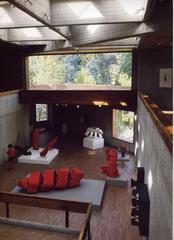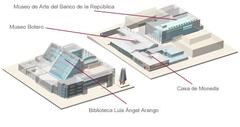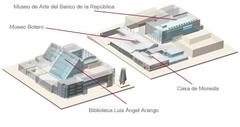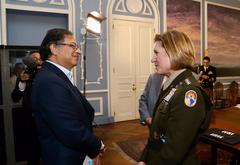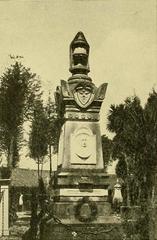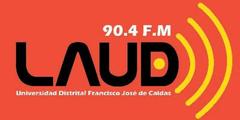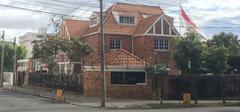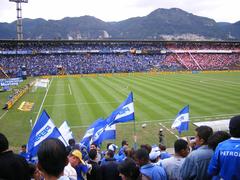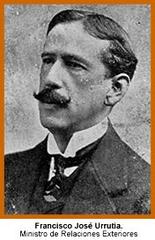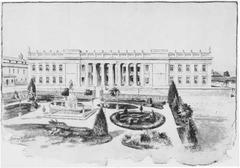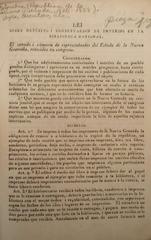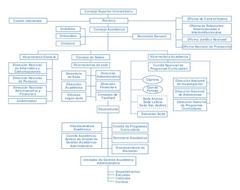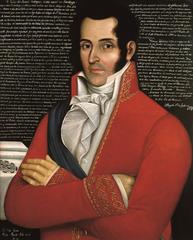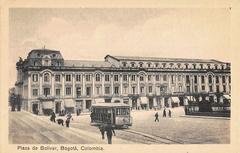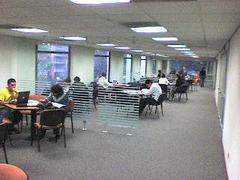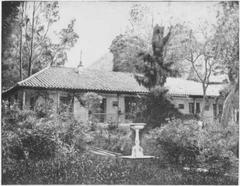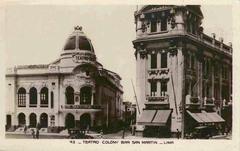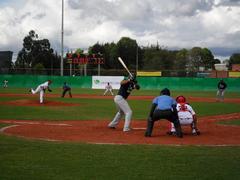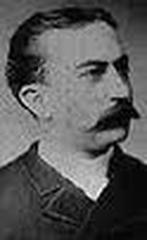Visiting Libre University of Colombia Bogotá: Complete Guide to Tickets, Hours, and Attractions
Date: 14/06/2025
Introduction
Visiting the Libre University of Colombia (Universidad Libre) in Bogotá provides a unique opportunity to explore one of the country’s most historic and culturally significant educational institutions. Established in the late 19th century, Universidad Libre has played a pivotal role in promoting academic freedom, secularism, and social justice. Centrally located in Bogotá, its campuses merge architectural heritage with a vibrant intellectual and cultural atmosphere. This guide presents everything you need to know for an enriching visit—covering history, visiting hours, campus tours, accessibility, travel tips, and nearby attractions. For more detailed information, see the Universidad Libre official site and the Bogotá Travel Guide.
Table of Contents
- Welcome to the Libre University of Colombia: A Historic Monument in Bogotá
- Highlights for Visitors
- Visiting Hours and Tickets
- Guided Tours and Visitor Tips
- Location and Getting There
- Virtual Campus Exploration
- Frequently Asked Questions (FAQ)
- Historical Background and Founding Principles
- Academic Excellence and Social Impact
- Campus Life and Cultural Significance
- Internationalization and Global Engagement
- Practical Visitor Information
- Exploring Nearby Bogotá Historical Sites
- Campus Experience, Services, and Daily Life
- Visiting the Libertad Monument in Bogotá
- Conclusion and Recommendations
- References
Welcome to the Libre University of Colombia: A Historic Monument in Bogotá
Universidad Libre, located in the heart of Bogotá, is both a prestigious academic hub and a significant historical landmark. Founded in 1890 and officially inaugurated in 1923, it stands as a testament to Colombia’s journey toward academic freedom and social progress. The university’s architecture reflects more than a century of educational evolution, making it a compelling stop for history enthusiasts, prospective students, and cultural tourists.
Highlights for Visitors
- Architectural Heritage: The campus features an eclectic mix of classic and contemporary Colombian architecture, with notable buildings tracing the university’s growth through the decades.
- Cultural Events: Regular exhibitions, lectures, and performances highlight Colombia’s diverse artistic and intellectual landscape.
- Peace and Inclusion Initiatives: Universidad Libre is recognized for its Peace Observatory and programs championing social inclusion and civic engagement.
Visiting Hours and Tickets
- Opening Hours: Monday through Friday, 9:00 AM to 5:00 PM. Weekend visits are available by appointment.
- Admission: General campus access is free. Special exhibitions or events may require tickets, which can be purchased on-site or via the university’s official website.
Guided Tours and Visitor Tips
- Guided Tours: Book in Spanish or English through the visitor center or online. Tours showcase the university’s history, architecture, and cultural contributions.
- Photography: The campus is photogenic, with both historic structures and green spaces. Visitors are welcome to take photos, especially of public areas.
- Accessibility: Ramps, elevators, and accessible restrooms are available. Notify staff ahead of time for special assistance.
- Travel Tips: The campus is easily reached via TransMilenio and other public transport. Limited parking is available on-site.
Location and Getting There
The main campus is at Calle 49 No. 7-21, centrally situated near Bogotá’s top cultural and historical sites. Public transport, including TransMilenio, offers convenient access.
Virtual Campus Exploration
Explore the campus virtually with interactive maps and tours on the Universidad Libre website, offering detailed views of key landmarks and facilities.
Frequently Asked Questions (FAQ)
- Is the campus open to the public?
Yes, during posted hours; public events are regularly held. - Is there an entry fee?
No, general access is free; some events may require tickets. - Are guided tours available?
Yes, book in advance via the website or visitor center. - Is the campus accessible?
Yes, with accommodations for visitors with disabilities. - Are amenities like restrooms and food available?
Yes, restrooms and cafes are on-site.
Historical Background and Founding Principles
Universidad Libre was established in 1923 during a transformative era in Colombia. Its founders—intellectuals and reformers—sought an alternative to the traditional, religiously affiliated universities, emphasizing secularism, intellectual liberty, and access for all social strata (Universidad Libre - Historia). The institution quickly became a beacon for democratizing higher education in Colombia (WENR: Education in Colombia).
Academic Excellence and Social Impact
Academic Offerings
Universidad Libre offers diverse undergraduate and postgraduate programs in Law, Engineering, Health Sciences, Economics, and Social Sciences. The Law faculty is particularly prestigious, noted for its commitment to justice and public service (Universidad Libre - Pregrados).
Research and Innovation
Research is integral, with active centers focusing on human rights, public policy, sustainability, and technological advancement (Universidad Libre - Investigación). Students participate in research from early in their academic careers.
Social Responsibility
Community engagement is a cornerstone of the university’s mission. Legal clinics, health campaigns, and educational workshops serve Bogotá’s marginalized populations, providing students with practical, socially impactful experience (Universidad Libre - Proyección Social).
Campus Life and Cultural Significance
Intellectual and Cultural Hub
The university hosts academic conferences, public lectures, and art festivals, making it a gathering place for the city’s intellectual and artistic communities (Bogotá Travel Guide).
Student Diversity and Inclusion
With students from across Colombia and multiple campuses nationwide, Universidad Libre fosters a diverse, inclusive environment, supported by scholarships and accessibility initiatives (Universidad Libre - Sedes).
Impact on National Identity
The university has produced leaders in government and civil society, shaping Colombia’s democratic values and national identity (WENR: Education in Colombia).
Internationalization and Global Engagement
Universidad Libre is expanding its international collaborations, participating in academic exchange programs and research partnerships worldwide (WENR: Inbound Student Mobility). The primary language is Spanish, but orientation and support are available for international students (Bogotá Travel Guide).
Practical Visitor Information
- Hours: Generally 8:00 AM to 6:00 PM on weekdays; check the events page for updates.
- Admission: Free, with some events requiring registration.
- Accessibility: Fully accessible facilities; notify staff if you need accommodations.
- Campus Tours: Arrange in advance through visitor services.
Exploring Nearby Bogotá Historical Sites
The university’s central location makes it easy to visit La Candelaria, the Museo del Oro, Museo Botero, and Plaza de Bolívar—offering a broader cultural context to your university visit (Bogotá Travel Guide).
Campus Experience, Services, and Daily Life
Campus Layout
Bogotá’s main campuses are La Candelaria (historic, cultural) and El Bosque Popular (modern, green, sports facilities) (Wikipedia). Each provides distinct experiences for visitors.
Facilities and Support
Modern classrooms, libraries, computer labs, and research centers support academic life. Support services include academic advising, counseling, and a career portal (Unilibre Bogotá).
Dining and Accommodation
On-campus cafeterias offer local cuisine. Nearby, La Candelaria provides a range of accommodation options (My Global Viewpoint).
Visiting the Libertad Monument in Bogotá
Location and Access
The Libertad Monument is in Plaza de la Libertad at Carrera 7 and Calle 12, accessible by TransMilenio and taxis.
History and Significance
Erected in the early 20th century, the monument honors Colombia’s independence and is a focal point for civic celebrations.
Visiting Details
- Hours: Open 24/7, as it sits in a public plaza.
- Entry: Free.
- Tours: Included in many walking tours of Bogotá’s historic center.
- Safety: Safe during the day with a visible police presence. Exercise standard caution at night.
Nearby Attractions
- Museo del Oro
- Plaza de Bolívar
- Botero Museum
- La Candelaria neighborhood
Practical Tips
Dress in layers for Bogotá’s cool climate, carry Colombian pesos for local vendors, and greet others politely in Spanish.
For further tourist information, visit the Bogotá Tourism Portal.
Conclusion and Recommendations
A visit to Universidad Libre in Bogotá offers an immersive blend of academic heritage, vibrant campus life, and cultural exploration. The university’s historic campuses are not only centers of learning but also living monuments to Colombia’s pursuit of intellectual freedom and social inclusion. With accessible tours, free entry, and proximity to Bogotá’s key attractions, Universidad Libre is a top destination for students, tourists, and history enthusiasts alike.
Enhance your visit by checking the events page, following the university’s communications, and using digital tools like the Audiala app for guided tours and updates.


